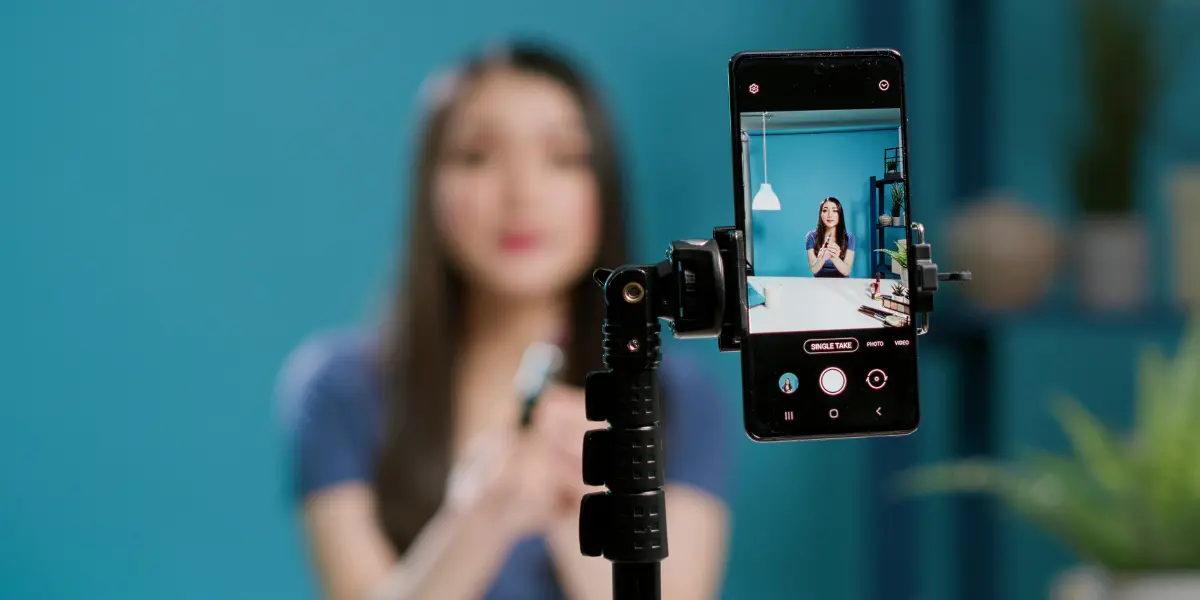Content creation is a term used often in digital marketing, but what is it?
First and foremost, we must answer the question: what is content? And, unfortunately, there is no simple answer. “Content” is often used to refer to different things and acts as an umbrella term. HubSpot, for example, has identified twelve different types of content, including blogs, videos, infographics and more.
Really, the best way to think about it is… Any form of content created with the goal of growing or engaging an audience. Blogs, videos, memes, it’s all content. And that’s a good thing too! The more you have to work with, the easier content creation is.
so, what is content creation?
Content creation describes the actual, physical creation of any form of content. This means that creating content can be writing, filming, designing, illustrating, or really any creative endeavour.
Content creation is different from content curation. While content creation is original content that you create, content curation refers to content you share from external sources that you do not own. This includes sharing someone else’s article in a social media post or retweeting something on Twitter.
To note: when curating content, you must be clear that you are sharing other people’s work. Make sure to give proper credit/attribution.
creating written content
Written content is perhaps the most commonly thought-of definition for “content.” Creating and running a blog can increase your business’ credibility and thought leadership, and improve your SEO. Companies that run blogs gain 97% more inbound links than those that don’t.
Blogs are highly valuable to your audience and consumers. Evergreen content is the most common type of blog, referring to articles that are not time-limited. These can stand the test of time with only minor updates for accuracy/relevance. List articles and checklists are great for informing and educating your audience on a certain topic. On the flipside to evergreen content, news articles are time-sensitive and focus on current news and events. They will become outdated over time.
To get the most out of your blog content, create a content marketing matrix to plan ideas and content schedules. You’ll need to go in with an idea of your content marketing goals so you know which KPIs to track. From there, you can devise a content creation plan tailored to your business and audience. There are tonnes of content marketing matrix templates available online to help you get started!
Creating Whitepapers, Case Studies, How-To Guides, and eBooks
![]()
Written content also includes whitepapers, case studies, how-to guides, and eBooks. All of these types require a combination of content creation methods. For example, eBooks need to have written content as well as visual content such as images and custom designs. They all also require a great deal of research, far more than your average blog article.
Creating Visual and Audio-Visual Content
On the visual side of content, we have the creation of images, graphics, and infographics. This visual content can be used across all your marketing channels, such as on social media, in print or digital advertising, and on your website. Visual content is incredibly engaging and should be utilised frequently in your marketing efforts. 48.2% of marketing contained visuals, and original graphics were used most frequently.
On the audio-visual side, video content is hot in marketing right now. Videos help you tell a story, sell products, engage customers, and educate the viewer. In content marketing, the primary form of media used is video. Video content also extends to live streaming and short-form video on social media, both of which are extremely engaging methods of communicating with customers.
Contrary to popular belief, you don’t need to be a graphic design or cinematography expert to create compelling visual and audio-visual content. For images and graphics, there are plenty of free and affordable alternatives to using pro software such as Adobe Photoshop that are suitable for beginners and/or marketers short on time. Likewise, for video creation, there is some great software available helping marketers create and edit videos for social, ad, and website content.
Creating Social Media Content
Although some marketers do not include social media content within the ‘content’ term, we simply cannot exclude social media content from this discussion. Social media content is, in our opinion, part of the ‘content’ umbrella, especially as repurposed written and visual content continues to be cross shared between digital channels. Modern social media content is more engaging and creative than ever before. Social infographics, animated GIFs and videos, and repurposed content marketing pieces are all prevalent on social media, gaining traction and engagement for brands everywhere.
If you’re stuck on new social media content to create, follow these tips to breathe new life into your social media feed: conduct market and competitor research, diversify your content, repurpose your existing content, optimise your existing resources, and invest in social media advertising. When it comes to diversifying your content, it can be tricky to know what to post and when.
We find that to 60 30 10 rule for social media content creation is a great framework for making diverse, engaging social media posts. The rule states that 60% of your content should be engaging, aiming to inform/entertain/educate your audience. 30% should be from external sources, showing that you’re knowledgeable of your industry. Lastly, only 10% should be promotional. Leave the sales-focused content for paid advertising. First and foremost, your organic content should bring value to your audience.
Need a hand with content creation?
Do you need help with content creation? At Giraffe Social Media, we provide a range of content creation and social media marketing services. Get in touch today to find out how we can help you.
This was originally posted on August 2021. The article was updated for relevance on October 2024.






